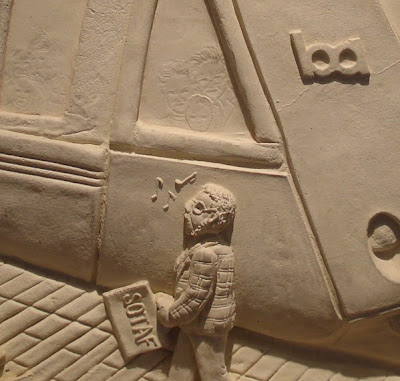What is the hidden truth about the best-seller status of “The Entertainer?” What was Marvin Hamlisch’s astonishing response to David Reffkin’s request for an interview? Is it really possible to quantify the time it took to alter history? You will be stunned by the revelation presented at the very opening of this talk. Yet the tension, surprise, horror and enlightenment will only intensify as the story unfolds toward the dramatic, shocking conclusion!
The Sting accomplished what no other picture ever did: It thoroughly revitalized and re-popularized an entire genre of music. This is the definitive account of how an original American creation - ragtime - became a pop music phenomenon, as it had been some 70 years earlier. It was also recognized as a classical art form, a goal that Scott Joplin had tried to achieve before his death in 1917.
The Library will present The Sting At 40: A Sure Bet That Paid 29 to One, a lecture by David Reffkin, on Thursday night, September 5, 2013 at 6:30 PM in the Latino/Hispanic Meeting Room in the Library's Lower Level.
Reffkin traces the actual (not mythical) history that led to the extensive use of ragtime in the movie score, the overnight rise of Scott Joplin's music on the record charts, the extent of its influence on our culture, and the rebirth of ragtime as a compositional form. Along the way he clarifies the process of choosing ragtime for the score by director George Roy Hill and composer Marvin Hamlisch. He’ll detail some of the contemporaneous reviews, awards, misperceptions, and long-lasting effects - intended and otherwise - of The Sting and its unsuccessful sequel (did you know there was a sequel?).
David was personally involved with some of the background events that led to the scoring of the music. Through careful documentation and direct quotes from the principle players, he shows the evolution of The Sting from a tale of con artists and self-employment to a film that became known as much for its score as for its stars, Paul Newman and Robert Redford. And he illustrates the 40-year migration of “The Entertainer” from main title theme to ring-tone.
• Background quotations about the genesis from the writer, director, two stars, Marvin Hamlisch, and others
• Precedent events, especially the Joshua Rifkin ragtime recordings, NY Public Library Collected Works of Joplin, and the “Red Back Book” recording of the New England Conservatory Ragtime Ensemble
• Comparison of the film score with the soundtrack recording
• Published reviews –favorable and not - of the score
• Two-year arc of the popularity of ragtime, including chart tracking and awards
• The difference between “The Sting” by Marvin Hamlisch and “The Entertainer” by Scott Joplin
• Effect of the film on the genre of ragtime and the careers of ragtime musicians and composers; secondary influences on classical and popular music
• The Sting II, especially in terms of adaptation and marketing
• Financial picture of the film production versus the ragtime composition and performance “industry”
DAVID REFFKIN is the director of The American Ragtime Ensemble, founded in 1973, with expertise in the history of orchestration and performance of music from the early 1900s. His interests in ragtime began during study at the New England Conservatory as a recording engineer on the Grammy-winning Red Back Book album of the NEC Ragtime Ensemble, a group he later joined as lead violinist. For 30 years he produced and hosted The Ragtime Machine, a radio program broadcast every week without interruption. These shows are now preserved at the Stanford University Archive of Recorded Sound. Many of his interviews and reviews appeared in The Mississippi Rag, for which he was a contributing editor and won the readers’ poll for Best Ragtime Journalist. His seminars are a popular feature at ragtime festivals around the country.
As a professional violinist, David appears as a soloist and member of various ensembles, performing many styles of music. He is also a conductor, arranger and music contractor, and he is frequently called upon to work as a music curator, archivist, speaker, consultant and teacher. Acknowledged for his editorial work, he wrote the Foreword for the discography Cakewalks, Rags and Novelties (2003). David was one of the musicians who helped create the Scott Joplin Ragtime Festival in 1974, organizing and directing the festival All-Star Orchestra, and in 2006 he received the Scott Joplin Award “for outstanding achievement in research, performance, and advancement of ragtime.” In 2011, the city of San Francisco presented him with the Mayor’s Certificate of Honor.
This program is supported by the Friends of the San Francisco Public Library. All library programs are free and open to the public.
Panel: SF Asian American Journalists Go Live
21 hours ago












